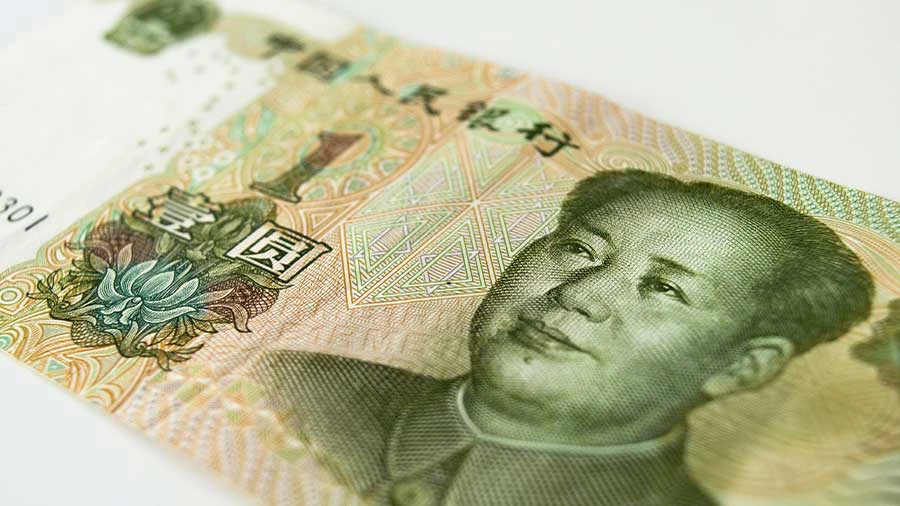China has released its Interim Administrative Measures for Generative Artificial Intelligence (AI) Services. We interpret key points of the law, the differences between the draft Measures released in May and the final version of the Interim Measures, and how it could impact technology service providers in the China market.
Shortly after the draft Measures for Generative Artificial Intelligence Services were released, the Cybersecurity Administration of China (CAC), along with six other agencies, collaborated to issue the official Interim Administrative Measures for Generative Artificial Intelligence Services (《生成式人工智能管理暂行办法》), hereinafter referred to as the "Generative AI Measures" on July 13, 2023. These measures are scheduled to come into effect on August 15, 2023.
As the first comprehensive AI regulation in China, the Generative AI Measures encompass a wide array of subjects pertaining to the development and provision of generative AI services. These regulations are set to impact Chinese technological exports and global AI research networks. China's proactive stance in implementing such regulations positions it as a trailblazer, shaping the worldwide landscape of AI regulatory frameworks.
The Generative AI Measures place a strong emphasis on the development and deployment of AI, showcasing China's commitment and support for the advancement of this technology. By creating a secure and conducive operational environment, China aims to foster innovation and responsible use of AI in various sectors.
What is the background for the Generative AI Measures?
China is a pioneer in the promulgation of AI-related policies and sees technology as a critical tool to boost its economy and national power. The country’s New Generation Artificial Intelligence Development Plan (2017) is among the first efforts to set out a top-level goal of global AI leadership by 2030, which led to an explosion in industry activity and policy support for AI development.Major impactful milestones on algorithms and AI are the Administrative Provisions on Recommendation Algorithms in Internet-based Information Services (2021) and the Deep Synthesis Provisions (2022). While these efforts revealed the government’s grip in the technology sector, they also addressed the social, ethical, and economic impact that AI has on society, including promoting anti-competitive business practices, correcting excessive price discrimination, and protecting platform delivery workers.
However, the effectiveness of regulating recommendation algorithms and deep synthesis may be limited when it comes to addressing new concerns arising from information generated by large language models or the increasingly versatile nature of AI tech. This gap could result in certain AI services operating without adequate oversight, potentially leading to unintended consequences.
To address these concerns, the Generative AI Measures become necessary, considering the dynamic nature of generative AI technologies, and striking a balance between regulation and compliance. Such an approach is crucial in fostering responsible AI development while encouraging innovation.
Understanding China’s new Generative AI measures
Scope and key definitions
The Generative AI Measures set out the scope of the regulation in Article 2 to be only applicable to services accessible to the general public within China. Notably, the Generative AI Measures exclude generative AI services developed and utilized by enterprises, research and academic institutions, and other public entities from their scope. Technologies targeting users outside China are also exempted. In this sense, technologies that do not focus on the general Chinese public may enjoy more flexibility.The Generative AI Measures further define the key terms under Article 22:
- “Generative AI Technologies” are defined as models and related technologies that can generate contents in the form of text(s), picture(s), audio and video(s).
- “Generative AI Services” is defined as service that is offered to the public and generates content in the form of text(s), picture(s), audio and video(s) by use of generative AI technologies.
- “Generative AI Service Provider” refers to an entity or individual that utilizes generative AI technologies to provide Generative AI Services, including providing generative AI services through application programming interface (API) or other methods.
Key requirements for generative AI service providers in China
The Generative AI Measures place a diverse array of responsibilities on generative AI services providers. These encompass aspects such as AI governance, training data requirements, tagging and labeling standards, data protection protocols, and safeguarding user rights. Below, we present a few highlights:- Content moderation: Providers are held accountable as "content producers" according to the Generative AI Measures (Article 9). When “illegal content” is identified among users of these services, providers must promptly take actions, including suspending content generation and transmission, taking down the content, and addressing the issue through model optimization. Additionally, providers are required to report such incidents to regulators (Article 14).
- Training data: The Generative AI Measures require service providers to source data and foundation models from legitimate sources, respect the intellectual property rights of others, and process personal information with appropriate consent or legal basis under Chinese laws. Providers must enhance the quality of training data, striving for “authenticity, accuracy, objectivity, and diversity” (Article 7). During the development stage, providers must establish "clear, specific, and practical" labeling rules for the training data. Conducting quality assessments of data labeling and sample verification to ensure the accuracy of labeled content is also required (Article 8).
- Tagging of generated content: According to Article 12, providers are mandated to add tags to content generated by Generative AI Services, in line with the requirements outlined in the Provisions on the Management of Deep Synthesis in Internet Information Service.
- User protection: The Generative AI Measures encompass various provisions aimed at safeguarding user rights and ensuring their protection of personal information. Providers are mandated not to collect unnecessary personal information and are prohibited from storing input information and usage records in a manner that can identify individual users. Additionally, they are restricted from disclosing users' input information and usage records to third parties (Article 11). Providers must establish a mechanism to receive and address complaints from users. Moreover, any requests made by users for accessing, obtaining copies, correcting, or deleting their personal information should be handled promptly (Articles 11 and 15).
- Security assessment and filing: Although the Generative AI Measures do not explicitly identify high-risk services, generative AI services associated with public opinion or social mobilization attributes must undergo security assessment and algorithm filing (Article 17). Regulators may target information services enabling public expression and participation in activities, like Internet forums, blogs, chat rooms, public accounts, short videos, and webcasts, in line with other Chinese regulations.
What are the changes between the draft and final versions of the Generative AI Measures?
The final Generative AI Measures indicate a more flexible and accommodating approach than the draft version. Several requirements from the previous version were removed, such as user profiling prohibition, user real-name verification, and the three-month model optimization training to prevent illegal content generation.A new section was added to place greater emphasis on balancing AI industry development. Several clauses were added throughout the content to promote innovation, development, and security in generative AI. For example, Article 3 demonstrates the country’s attention to development and security, promoting the combination of innovation and legal governance. Effective measures will encourage innovation and development in generative AI while implementing regulation that is tolerant and cautious. This emphasis also aligns with the strategic importance of the AI industry in the era of great power competition.
Further, some additional changes include:
- Alleviated punishments and constraints for platform operators: The Generative AI Measures removed specific fines from the draft, which may reach up to RMB 100,000 (around US$14,000) for violations, and the requirement for platform operators to rectify problematic content within a three-month grace period. Rather, the Generative AI Measures now emphasize the use of secure and trustworthy chips, software, tools, algorithms, and data sources. China's AI developers are encouraged to set standards and promote technological exchange, granting providers more development ownership in products and content.
- Strengthened language on data privacy and collection: The updated guidelines include a new article on government data requests (Article 19). It stipulates that relevant authorities will supervise and inspect generative AI services based on their responsibilities, while providers must cooperate and adhere to rules regarding training data sources, scale, type, and labeling. Providers are also required to offer explanations of their algorithm mechanisms and provide necessary technology and data support and assistance.
- Included provision on obtaining official certification: Additionally, an added provision (Article 23) now mandates providers of generative AI services to obtain relevant administrative approvals, following legal and administrative regulations.
Potential impact and recommendations
In the previous article, we analyzed and compared the difference between China’s AI regulation and those of other countries, namely the US and European nations.In comparison, China takes a more niche approach towards AI regulation: the Generative AI Measures target specific applications or manifestations of a technology, different from the European Union's AI Act, which aims to comprehensively cover all applications of a given technology. China's unique approach to AI governance also centers on specific algorithms, evident in their policy discourse and the decision to make algorithms the fundamental unit for transparency and disclosure via the algorithm registry. For example, companies may need to undergo multiple filings for the same app, each addressing different algorithms used for personalized recommendations, content filtering, and other functions.
While these rules impose some limitations on business behaviors, they all carry an encouraging tone that promotes the development of the AI industry. Companies in the industry should also view China as one of the pioneers in AI regulation, rather than perceiving the rules as restrictive. Recently, Elon Musk mentioned China's interest in collaborating within an international framework for AI regulation, based on conversations he had in China a few weeks ago. The final Measures now offer a greater role for organizations, enterprises, and academic institutions to research and innovate in the field of AI technology. This expansion opens up more opportunities for enterprise-facing applications as well.








